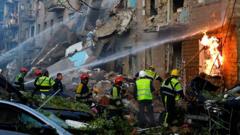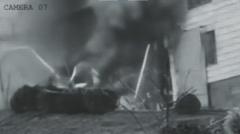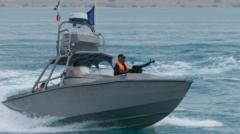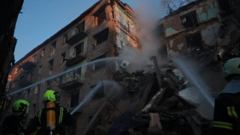With President Trump's arrival in the Netherlands for his first summit post-re-election, Europe is under pressure to demonstrate its commitment amidst rising geopolitical tensions.
**A Pivotal Moment at NATO: Trump’s Controversial Summit Sparks Global Tension**
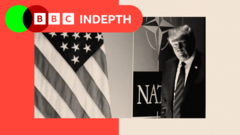
**A Pivotal Moment at NATO: Trump’s Controversial Summit Sparks Global Tension**
As the US targets Iran, this crucial NATO summit could redefine alliance dynamics.
As tensions soar in the Middle East following the US strikes on Iran's nuclear sites, President Donald Trump prepares to attend a pivotal NATO summit in the Netherlands on Tuesday. This will be Trump’s first meeting with NATO allies since his re-election, amidst a backdrop of strained transatlantic relations exacerbated by trade tariffs and military commitments. European nations are increasingly eager to showcase their investment in defense, hoping to counter Trump's historic criticisms of perceived military freeloading by alliance members.
A senior diplomat, maintaining anonymity, expressed concerns ahead of the gathering, noting, “relations have been tumultuous since Trump took office again. A no-show from him would imply weakness that Russia and China could exploit.” NATO Secretary-General Mark Rutte has supposedly designed this summit to please Trump, focusing heavily on defense spending increases to show European resolve in its own security matters. However, discussions around the escalating situation in Iran could overshadow the topic of defense budgets, risking potential friction between Trump and European leaders who favor diplomatic solutions over military action.
Should Trump arrive in the Netherlands, a clash of perspectives on Iran may be unavoidable, particularly since European NATO members advocate for diplomatic resolutions rather than military escalations. Trump, known for his aversion to criticism, is already presumed to expect notable outcomes from the summit, which includes commitments from European countries to hike defense spending to 5% of GDP—a target he vehemently pursued upon his return.
The summit’s credibility is at stake, as US Ambassador to NATO Matthew Whitaker labeled it “a watershed moment.” Yet, discontent lingers among European allies like Spain, which reportedly seeks to exempt itself from the mandatory spending increase. This discontent signals underlying tensions, as countries like Poland feel confident about their defense commitments. Poland currently allocates 4.7% of its GDP toward its military, evidenced by its historical fears stemming from the Soviet regime.
Complicating the landscape is Europe’s dependency on US military assets and leadership in NATO operations. As the US reassesses its global military commitments, particularly towards the Indo-Pacific, the presence and readiness of American troops in Europe become uncertain. The withdrawal of these forces could exacerbate Europe’s already complex security situation.
With NATO countries needing to boost their military investments significantly, leaders are grappling with public sentiment surrounding increased defense budgets at the potential expense of social welfare—hence the phrase “guns or butter.” Sorting these financial priorities will be essential to meet the spending targets expected by the alliance. As they approach this summit, European leaders recognize the necessity of unity, amid fears of Russian aggression.
As NATO allies step closer to a historic moment in defense cooperation, the ultimate outcome will depend heavily on how Trump engages with Europe. Will he reinforce NATO's commitment to collective security, or will his unpredictable stance drive a wedge between the US and its key allies? The world will be watching closely as the situation unfolds.

